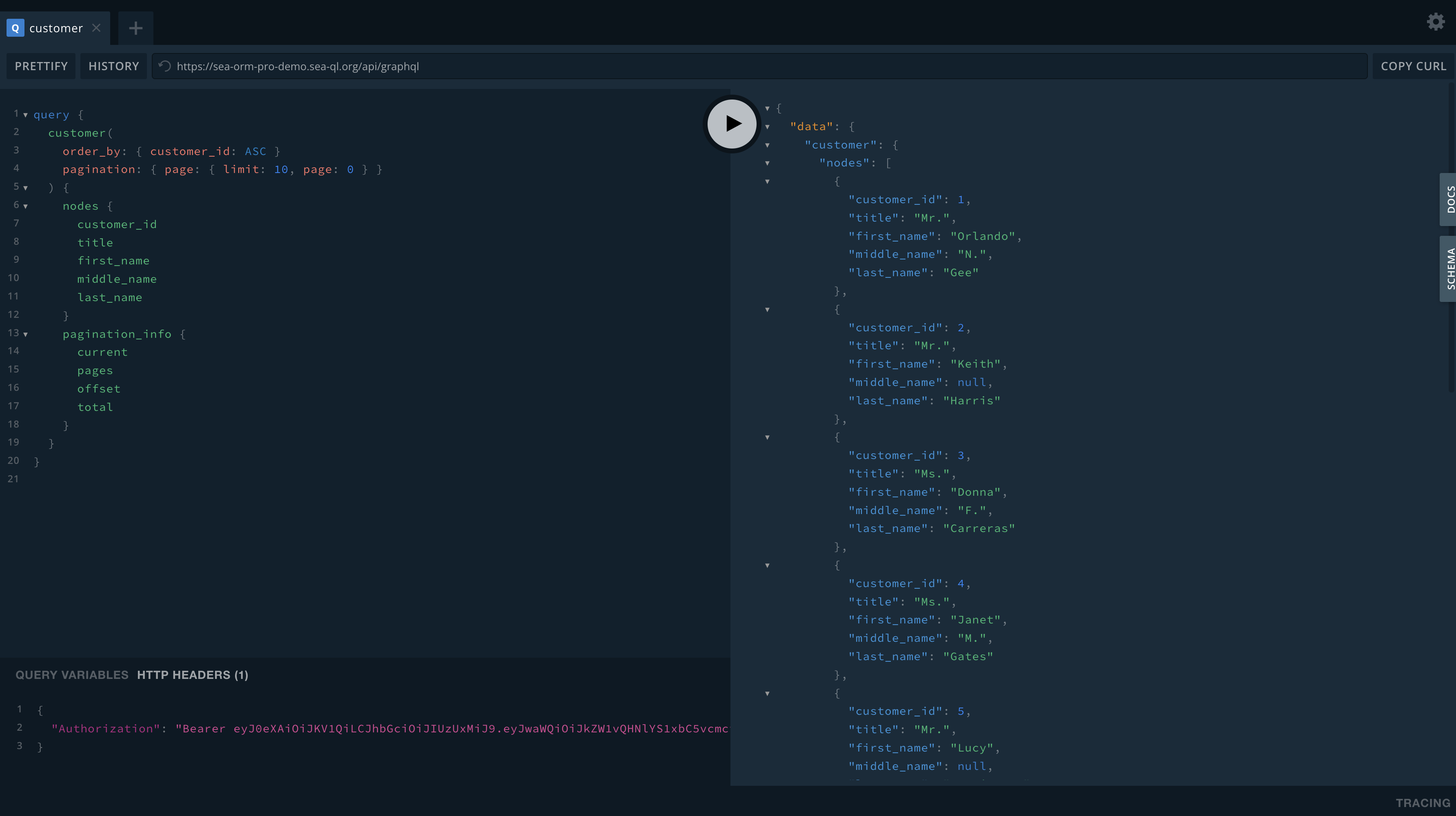GraphQL Playground
GraphQL playground and handler is defined in the GraphQL controller:
use async_graphql::http::{playground_source, GraphQLPlaygroundConfig};
use axum::{body::Body, extract::Request};
use loco_rs::prelude::*;
use seaography::async_graphql;
use tower_service::Service;
use crate::graphql::query_root;
async fn graphql_playground() -> Result<Response> {
// Setup GraphQL playground web and specify the endpoint for GraphQL resolver
let config =
GraphQLPlaygroundConfig::new("/api/graphql").with_header("Authorization", "AUTO_TOKEN");
let res = playground_source(config).replace(
r#""Authorization":"AUTO_TOKEN""#,
r#""Authorization":`Bearer ${localStorage.getItem('auth_token')}`"#,
);
Ok(Response::new(res.into()))
}
pub fn routes() -> Routes {
Routes::new()
// GraphQL route prefix
.prefix("graphql")
// Serving the GraphQL playground web
.add("/", get(graphql_playground))
// Handling GraphQL request
.add("/", post(graphql_handler))
}
You can disable the graphql_playground endpoint if you don't need it in production.
After login, visit the GraphQL playground by clicking GraphQL icon on the top-right corner.
You should see the "Bearer Token" has been applied automatically in the bottom panel.

A sample query:
query {
customer(
order_by: { customer_id: ASC }
pagination: { page: { limit: 10, page: 0 } }
) {
nodes {
customer_id
title
first_name
middle_name
last_name
}
pagination_info {
current
pages
offset
total
}
}
}